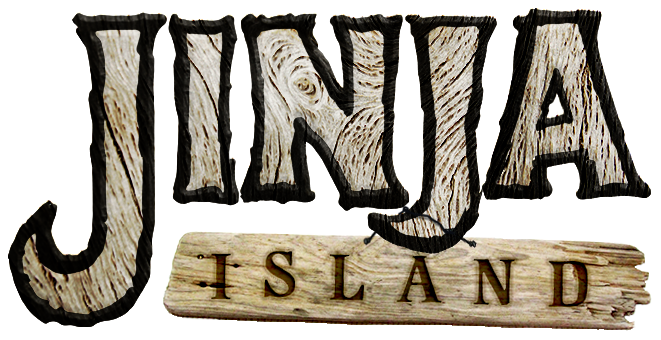Saturday 19th April 2014
So then, another day, another fabulous Mayan City to explore!! Uxmal is a 75km drive south of Merida, so we hopped on the bus and headed on down.

Mayan Site #6: Uxmal
Uxmal (Yucatec Maya: Óoxmáal) is an ancient Maya city of the classical period in present-day Mexico. It is considered one of the most important archaeological sites of Maya culture, along with Chichen Itza in Mexico (tick!); Caracol and Xunantunich in Belize (oh, really? bummer), and Tikal in Guatemala (tick coming soon!).

Uxmal is located in the Puuc region and is considered one of the Maya cities most representative of the region’s dominant architectural style. It has been designated a UNESCO World Heritage Site in recognition of its significance.
Uxmal is located 62 km south of Mérida, capital of Yucatán state in Mexico. Its buildings are noted for their size and decoration. Ancient roads called sacbes connect the buildings, and also were built to other cities in the area such as Chichén Itzá, Caracol and Xunantunich in modern-day Belize, and Tikal in modern-day Guatemala.
Its buildings are typical of the Riley Kand Puuc style, with smooth low walls that open on ornate friezes based on representations of typical Maya huts. These are represented by columns (representing the reeds used for the walls of the huts) and trapezoidal shapes (representing the thatched roofs). Entwined snakes and, in many cases two-headed snakes are used for masks of the rain god, Chaac; its big noses represent the rays of the storms. Feathered serpents with open fangs are shown leaving from the same human beings. Also seen in some cities are the influences of the Nahua, who followed the cult of Quetzalcoatl and Tlaloc. These were integrated with the original elements of the Puuc tradition.
The buildings take advantage of the terrain to gain height and acquire important volumes, including the Pyramid of the Magician, with five levels, and the Governor’s Palace, which covers an area of more than 1,200 m2 (12,917 sq ft).
The present name seems to derive from Oxmal, meaning “three times built”. This seems to refer to the site’s antiquity and the times it had to rebuild. The etymology is disputed; another possibility is Uchmal which means “what is to come, the future.” By tradition, this was supposed to be an “invisible city,” built in one night by the magic of the dwarf king.

Maya chronicles say that Uxmal was founded about 500 A.D. by Hun Uitzil Chac Tutul Xiu. For generations Uxmal was ruled over by the Xiu family. It was the most powerful site in western Yucatán, and for a while, in alliance with Chichen Itza, dominated all of the northern Maya area. Sometime after about 1200, no new major construction seems to have been made at Uxmal, possibly related to the fall of Uxmal’s ally Chichen Itza and the shift of power in Yucatán to Mayapan. The Xiu moved their capital to Maní, and the population of Uxmal declined.
Uxmal was dominant from 875 to 900 CE. The site appears to have been the capital of a regional state in the Puuc region from 850-950 CE. The Maya dynasty expanded their dominion over their neighbors. This prominence did not last long, as the population dispersed around 1000 CE.
After the Spanish conquest of Yucatán (in which the Xiu allied with the Spanish), early colonial documents suggest that Uxmal was still an inhabited place of some importance into the 1550s. As the Spanish did not build a town here, Uxmal was soon after largely abandoned.

Even before the restoration work, Uxmal was in better condition than many other Maya sites. Much was built with well-cut stones set into a core of concrete not relying on plaster to hold the building together. The Maya architecture here is considered matched only by that of Palenque in elegance and beauty. The Puuc style of Maya architecture predominates. Thanks to its good state of preservation, it is one of the few Maya cities where the casual visitor can get a good idea of how the entire ceremonial centre looked in ancient times.
The Adivino (a.k.a. the Pyramid of the Magician or the Pyramid of the Dwarf), is a stepped pyramid structure, unusual among Maya structures in that its layers’ outlines are oval or elliptical in shape, instead of the more common rectilinear plan. It was a common practice in Mesoamerica to build new temple pyramids atop older ones, but here a newer pyramid was built centered slightly to the east of the older pyramid, so that on the west side the temple atop the old pyramid is preserved, with the newer temple above it. In addition, the western staircase of the pyramid is situated so that it faces the setting sun on the summer solstice.
The structure is featured in one of the best-known tales of Yucatec Maya folklore, “el enano del Uxmal” (the dwarf of Uxmal), which is also the basis for the structure’s common name. Multiple versions of this tale are recorded. It was popularised after one of these was recounted by John Lloyd Stephens in his influential 1841 book, Incidents of Travel in Central America, Chiapas, and Yucatan. According to Stephens’ version, the pyramid was magically built overnight during a series of challenges issued to a dwarf by the gobernador (ruler or king) of Uxmal. The dwarf’s mother (a bruja, or witch) arranged the trial of strength and magic to compete against the king.
The Nunnery Quadrangle (a nickname given to it by the Spanish; it was a government palace) is the finest of Uxmal’s several fine quadrangles of long buildings. It has elaborately carved façades on both the inside and outside faces.
A large Ballcourt for playing the Mesoamerican ballgame. Its inscription says that it was dedicated in 901 by the ruler Chan Chak K’ak’nal Ajaw, also known as Lord Chac (before the decipherment of his corresponding name glyphs).
A number of other temple-pyramids, quadrangles, and other monuments, some of significant size, and in varying states of preservation, are also at Uxmal. These include North Long Building, House of the Birds, House of the Turtles, Grand Pyramid, House of the Doves, and South Temple.
Uxmal has attracted many visitors since the time of Mexico’s independence. The first detailed account of the ruins was published by Jean Frederic Waldeck in 1838. John Lloyd Stephens and Frederick Catherwood made two extended visits to Uxmal in the early 1840s, with architect/draftsman Catherwood reportedly making so many plans and drawings that they could be used to construct a duplicate of the ancient city (unfortunately most of the drawings are lost).) Désiré Charnay took a series of photographs of Uxmal in 1860. Some three years later Empress Carlota of Mexico visited Uxmal; in preparation for her visit local authorities had some statues and architectural elements depicting phallic themes removed from the ancient façades.
Sylvanus G. Morley made a map of the site in 1909 which included some previously overlooked buildings. The Mexican government’s first project to protect some of the structures from risk of collapse or further decay came in 1927. In 1930 Frans Blom led a Tulane University expedition to the site. They made plaster casts of the façades of the “Nunnery Quadrangle”; using these casts, a replica of the Quadrangle was constructed and displayed at the 1933 World’s Fair in Chicago, Illinois. The plaster replicas of the architecture were destroyed following the fair, but some of the plaster casts of Uxmal’s monuments are still kept at Tulane’s Middle American Research Institute. In 1936 a Mexican government repair and consolidation program was begun under José Erosa Peniche.
Queen Elizabeth II of the United Kingdom visited on 27 February 1975 for the inauguration of the site’s sound & light show. When the presentation reached the point where the sound system played the Maya prayer to Chaac (the Maya rain deity), a sudden torrential downpour occurred. Gathered dignitaries included Gaspar Antonio Xiu, a descendant of noble Maya lineage, the Xiu).
We left the site in the late afternoon, waited at the roadside for what seemed like an age before a bus came along and picked us up. We got back to Merida at sunset.

Then it was food>face>shovel time and after grabbing our things from the hotel, it was back to the bus station to jump on the overnight coach to our next awesome Mayan destination… PALENQUE!!





















